Open fires are prohibited throughout the park from midnight to 4 p.m. through April 30 per the 4 p.m. Burning Law. This includes wood and charcoal. Gas is permissible. Campground fires are allowed during the restricted time if a camp host is on duty and signage to that effect is posted in the campground. Failure to observe the 4 p.m. Burning Law can result in a fine. Contact the Park Office for additional information.
Read Our Blogs
Battlefield state park historians are honored to reveal family history for visitors
Shared by Joshua Lindamood, as Guest Blogger.
“Where is the cemetery? My great-great-great grandfather was in B Company, where was he positioned on the battlefield?” These are a couple examples of common questions we get asked by visitors as park rangers at Sailor’s Creek Battlefield Historical State Park and Staunton River Battlefield State Park.
With increasing frequency, a visitor will sojourn to our picturesque battlefields and will have a genealogical request for our staff. I know I speak for our historians on staff when I say we “light up” with these special inquiries. Rangers, with a series of analytical questions, can narrow down the location of the soldier’s command. I am happy to share with you some really touching moments that the park staff and I have been lucky to experience.

Sailor's Creek Battlefield Historical State Park Visitor Center
Learning more about the soldiers
Sailor’s Creek Battlefield and Staunton River Battlefield are no strangers to the many stories of the fallen soldiers and often get visits from soldier’s ancestors.
With approximately 60,000 combatants engaged at Sailor’s Creek, and nearly 7,000 at Staunton River Bridge, one can certainly see where the need to dive further than “B Company” comes into play. Casualties were high for both sides at both sites.
When helping visitors research their ancestors, we often begin by gathering as much information as we can from the visitor such as the soldier’s name, rank, command, state, and branch of service. The more visitors know about the soldier(s), the better. If they are a descendant from a soldier that served in a Virginia regiment, which often happens, we usually begin our search by referencing the Virginia Regimental History Series.
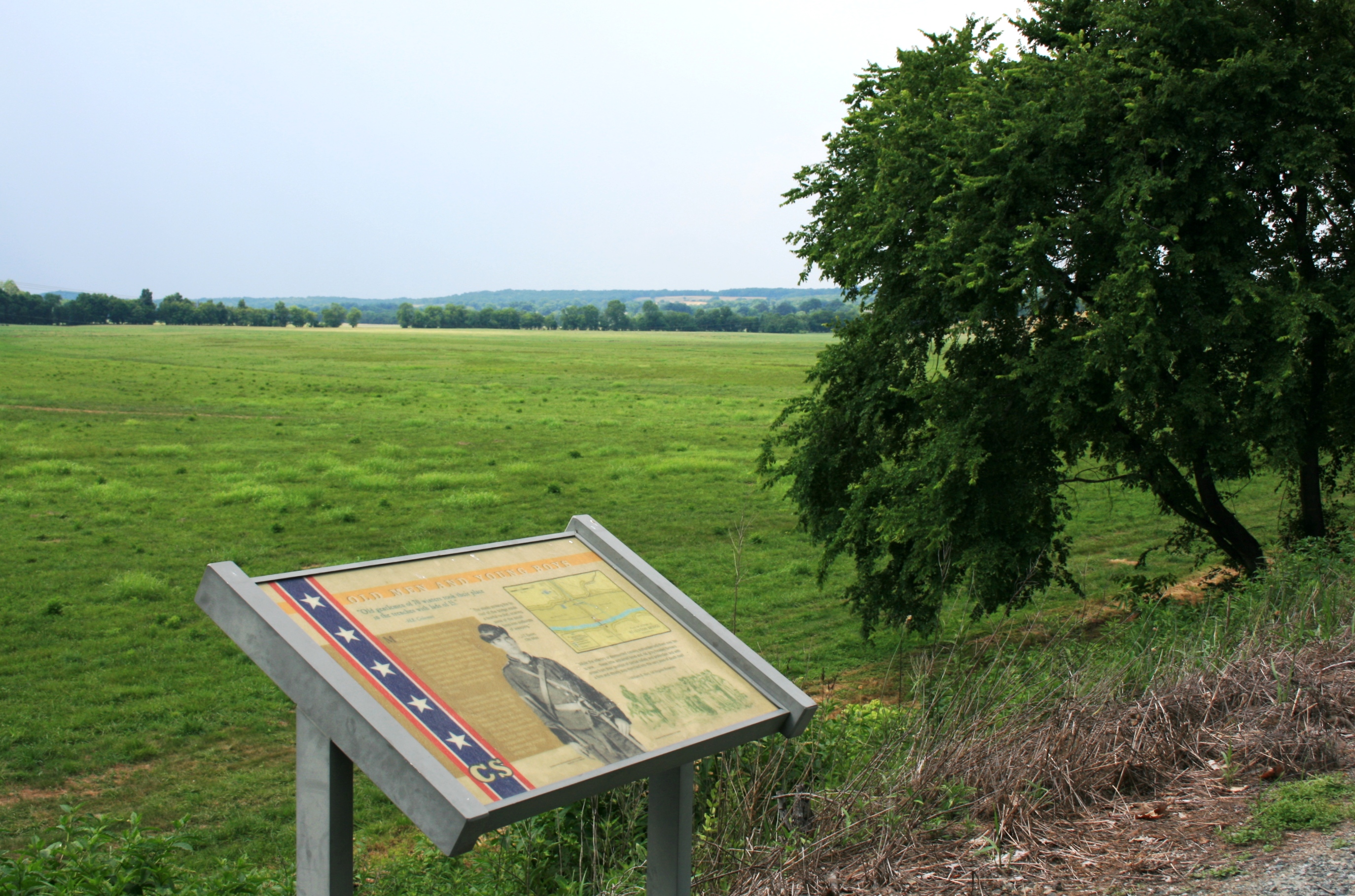
Staunton River Bridge Battlefield
Thanks to the colossal efforts of Harold Howard, who gathered nearly 100 historians and authors and completed a task that was deemed “impossible,” each regiment in the artillery, cavalry, infantry and reserves that served in Virginia has a book or chapter written about them. The unit roster is where we often begin our research. Sometimes the series and rosters will yield incredible results, including information on siblings, burial records, pictures and so forth. Most are generic—stating the soldiers name, rank, company assignment, description of physical attributes and a summary of his military record on file.
The next resource I check is one of great importance and one that I use almost daily. The website FOLD3.com has most soldiers and sailors Compiled Military Service Records available in a digital format. This avenue will sometimes yield phenomenal results. In some cases, visitors can see their ancestor’s handwriting and signature, photographs when available as well as follow a chronological paper trail of their soldier’s time spent in the military. On occasion, casualty information will be provided — up to and including death and internment. For some visitors who have nothing more than a name when they walk in, this can be an emotional uncovering.
Emotional discoveries
I remember one couple specifically who were looking for more information about a Union soldier in General Andrew Humphries 2nd Army Corps. All they knew was that the soldier was killed at Sailor’s Creek around the Lockett Farm. When I pulled his information from FOLD3, I was able to see that their soldier had indeed been killed in action during the fighting here. In fact, his file even included a surgeon’s diagram detailing that the 18-year-old had been shot in the face dying instantly and was originally interred on the field. This was a level of detail that was completely unexpected judging by their immediate emotional and mental change. I carefully gave them directions to visit the vicinity where their soldier received this fatal wound. They left incredibly moved and thankful for the finesse in handling their inquiry and visit.
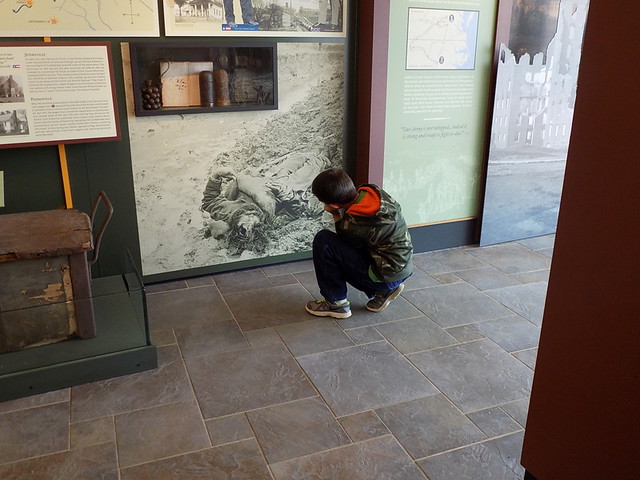
A young visitor learning about the battles on display
My colleague and fellow Historian Zachary Pittard said, “In those moments, there is a gleam in the eyes of the visitor, expressions on their face that show so many emotions: happiness, sadness, closure, pride, remorse and so many others. They get to tread the same ground and imagine what their ancestor did, ponder on what they thought, and process those questions into a connection, tangible or intangible, with their own lives.”
A unique visit for the quirks
An example of a happier visit happened in 2019. Assistant Park Manager Lee Wilcox recorded the encounter stating, “David ‘Eddy’ Quirk, the great, great grandson of Private Sam Eddy of the 37th Massachusetts Volunteer Infantry, brought his wife for what they thought would be a random visit to a Civil War site.”

Jim Godburn (pictured on the left) showing the Spencer rifle to David "Eddy" Quirk
Mr. Quirk and his wife have been visiting battlefields where the 37th Massachusetts fought. But what they discovered at Sailor’s Creek was a surprise of a lifetime!
Education Specialist Jim Godburn took them into the museum gallery and showed them the permanent exhibit dedicated to Private Sam Eddy’s heroism. Sam Eddy was awarded the Medal of Honor for his actions during the Battles of Sailor’s Creek. Jim also showed the Quirk’s our reproduction Spencer Rifle which was the type of weapon issued to the 37th Massachusetts and proved instrumental in not only saving Private Eddy’s life but also enabled him to perform his feat of valor when he was pinned to the ground by a Confederate bayonet. At great peril to himself, while immobilized on his back, his Confederate attacker stood over him trying to wrestle the Spencer Rifle from his hands. Private Eddy was able to chamber a new round into the weapon and fire a shot that dispatched the Confederate soldier. Removing the bayonet from his upper left chest, he got up and attended to his commanding officer who was also wounded, lying on the ground nearby, thus saving his life.
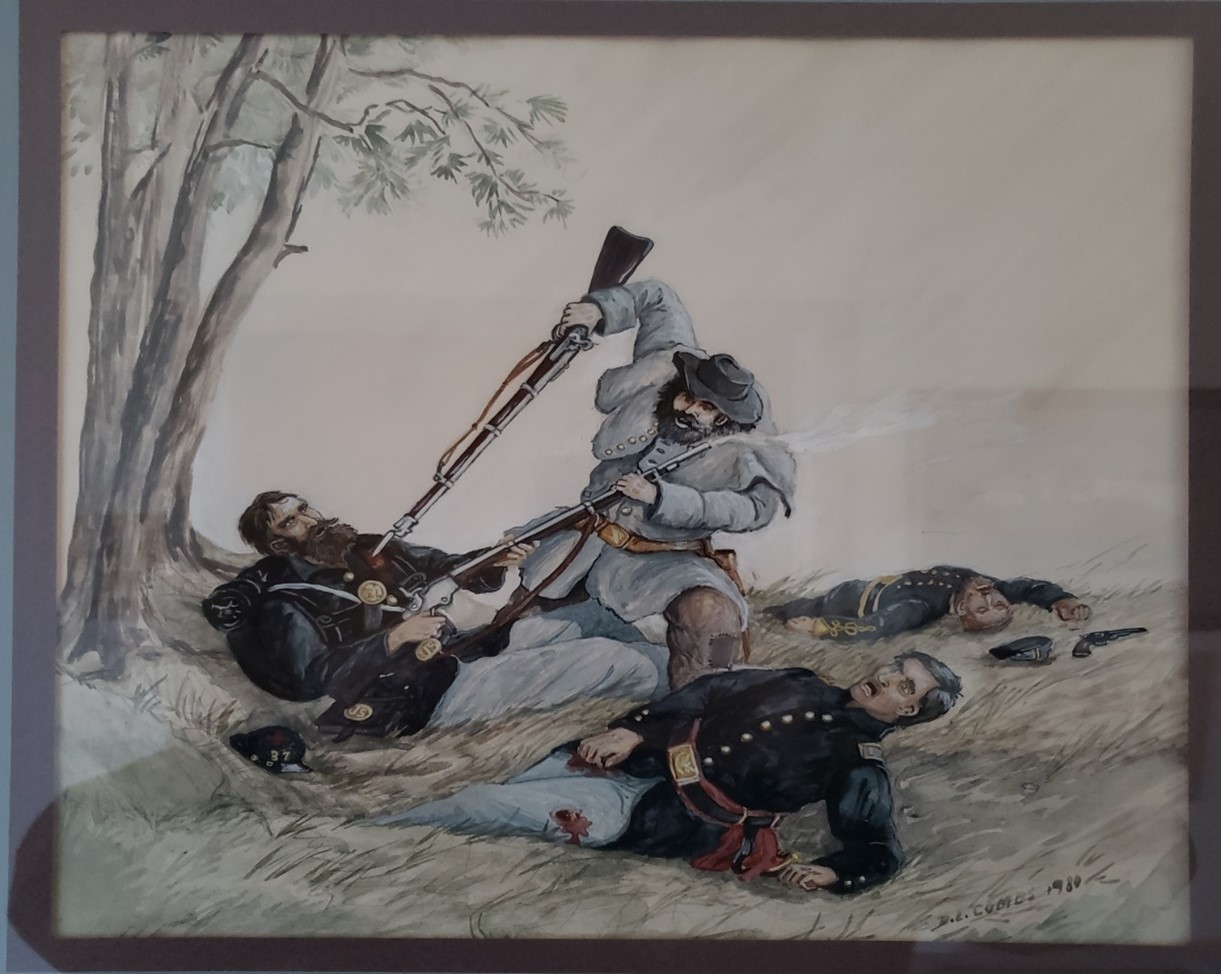
An artist's rendition of the action that earned Samuel Eddy the Medal of Honor
The Quirks were so happy with their visit and amazing experience, they are planning a return trip with several family members from Massachusetts.
Getting closure through historical documents
Another visit that ended with pride and closure happened when Debra Crutchfield Partridge and her husband visited from Las Cruces, N.M. Following in the footsteps of her great-great-uncle, Confederate Colonel Stapleton Crutchfield, who was killed in action on April 6, 1865, Debra paid a visit to the battlefield to get a closer look and to pay homage. Office Manager Sandie Ingersoll and I were able to show Mrs. Partridge new information and unpublished research that brought tears of joy to her eyes. There are conflicting accounts as to what the final moments for Col. Crutchfield looked like, but each scenario was conveyed carefully with comfort and ease in our research library for a more private setting. Such visits often necessitate a gentler approach and require more delicacy.

Debra Crutchfield, the great-great niece of Colonel Stapleton Crutchfield pictured with her husband on their recent visit to Sailor's Creek
Maps and documents were laid out on the table and as each possibility were presented, emotions gradually increased. After visiting the approximate location of the command, Debra and her husband returned to show their gratitude. Col. Crutchfield was buried on the battlefield and presumably still rests there today in an unknown location.
An emotional visit with New Jersey residents
Visitor Mrs. Carney had a photograph of then-19-year-old Sgt. Millen and a copy of a letter he had written in 1864 to his sister. She knew Millen had perished in the fighting here. She called ahead and set up the visit, so I had plenty of time to gather information and prepare for our time together. Sgt. Millen served in the 18th Georgia Battalion, known as the “Savannah Volunteer Guards”, and bore several mentions in the History of the Savannah Volunteer Guards written by their commander, Major William Star Basinger. Major Basinger wrote that “Sgt Millen fought like a lion” and “was one of the last to be struck down.” Because of that account, he has the distinct honor to be included in Keith Rocco’s painting Victory or Death. Sgt. Millen is just below and to the right of the Confederate battle-flag and is facing the viewer.

Keith Rocco's Victory or Death painting that depicts the 121st New York Infantry attacking the flank of the 18th Georgia Battalion
Ms. Carney was absolutely spellbound by the information being shared and was eager to visit the approximate battlefield location of the Savannah Volunteer Guards. I took Major Basinger’s account with me and when we got to the spot, I began reading in detail what had happened. As I read, she became very emotional, so much so in fact, I completely stopped when I realized how deeply it was affecting her. We stood there for a few minutes in complete silence (a lot harder to do than you realize with someone-especially an interpreter). When we broke the silence, I did not pick back up with the firsthand accounts, in fact it was the opposite - we spoke of peace. The peacefulness in that moment overpowered the bloody details and painful sensations that often accompany a battlefield. A spot where hell quite literally reigned briefly for the participants was now conquered by the sights and smells of warm spring morning.
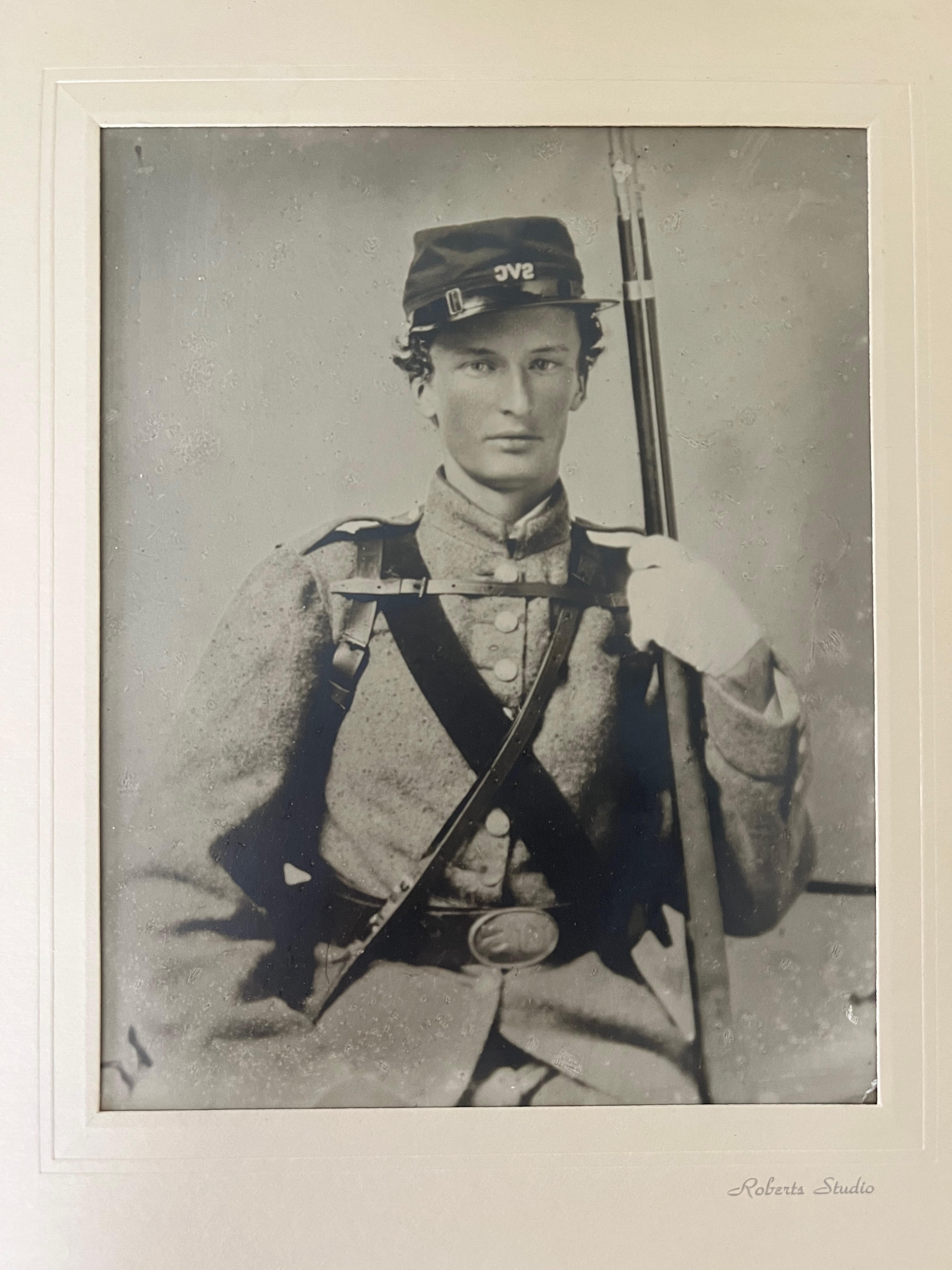
Sergeant Richard Millen of the 18th Georgia Battalion known as the "Savannah Volunteer Guards"
Sgt. Millen was among those Confederate soldiers buried in mass on the field following the engagement. Reportedly, his father returned that winter and his remains were located at Laurel Grove Cemetery in Savannah, Ga.
Guests discover Sailor’s Creek exhibit mentions their ancestors
One recent battlefield visit included a descendent of another Medal of Honor recipient, Daniel Drake and his granddaughter came to see the ground where their relative was engaged in combat near the creek bottom. Daniel was the great-great grandson of Private Warren Dockum, who was in the 121st New York Infantry and was credited with capturing the battle flag of the 18th Georgia Battalion. These flag captures were unique during the American Civil War, ensuring that each soldier would receive a Medal of Honor - and most sought, a 30-day furlough.
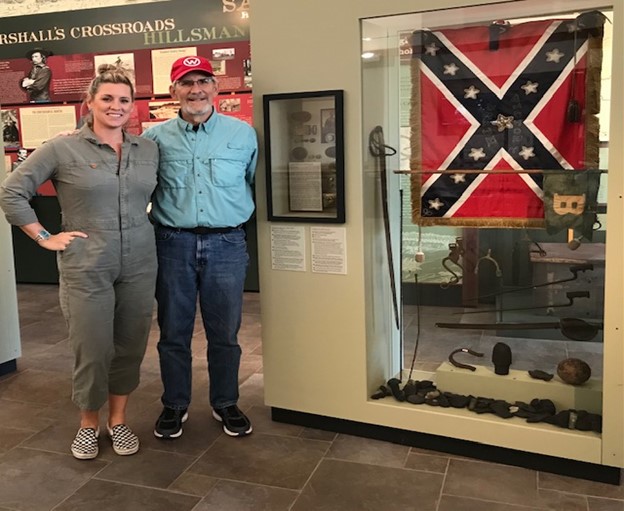
Daniel Drake and his granddaughter standing beside an exhibit highlighting the action of their ancestor, Private Warren Dockum of the 121st New York Infantry
Mr. Drake and his granddaughter spent several unexpected hours on site when they came into the visitor center and learned that the museum had an exhibit on the fore mentioned clash, including a reproduction 18th Georgia flag made specifically for our site. They were pleased with the exhibit, which mentions the bravery involved in Pvt. Dockum’s encounter and were happy to be pointed to the approximate location of where this event took place.
Creating meaningful connections with a photograph
Our most recent interaction happened during our 158th anniversary event in April 2023 while commemorating the battle. A woman walked in stating that she had a direct ancestor who fought in the battle and received a severe wound during the fighting somewhere on the field. The typical line of questioning began and what followed was unexpected. Her great-great-grandfather was 19-year-old Private Frederick Gross of the 5th Wisconsin Infantry. Members of the 5th Wisconsin are credited with capturing Confederate Lt. General Richard Ewell and his staff toward the conclusion of the engagement.
She carried a folder that contained a lot of information on Pvt. Gross, including a copy of a medical picture. She told the story of how Pvt. Gross was wounded in the chest on April 6 and was left for dead on the battlefield. The picture she had that accompanied his medical record showed him holding a chalk board with his unit information. If you look closely, you can see the wound on his breast indicating an entry and exit wound.
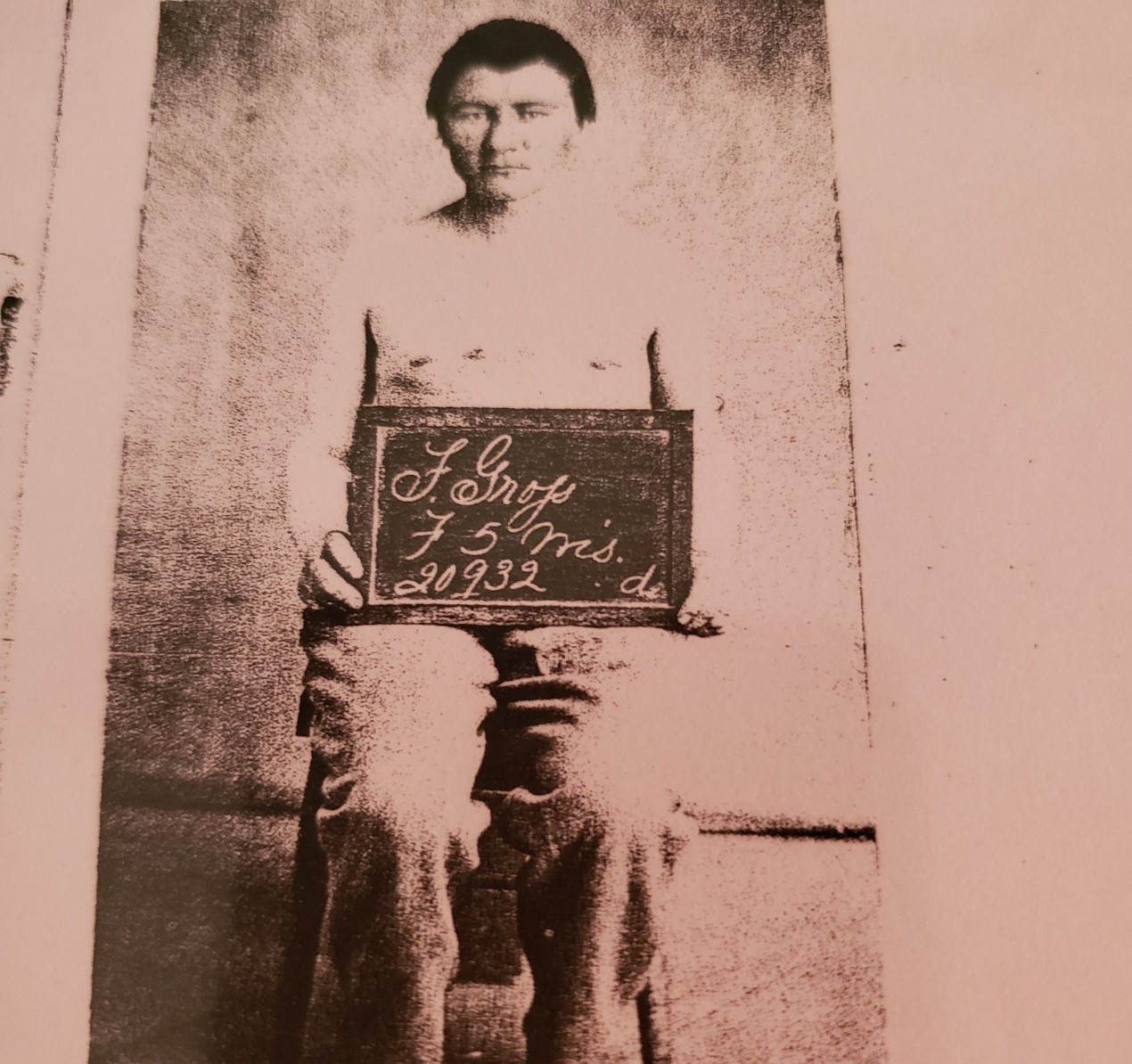
Private Frederick Gross, Company F, 5th Wisconsin Infantry. Photograph courtesy of his great-great granddaughter
Although these images aren’t common, several were made to help document wounds and the procedure put into practice to help fix them. The photograph above would have been made in a general hospital likely in Washington, D.C.
After she told me Frederick’s story, I showed her the approximate path the 5th Wisconsin took coming up the hill. She was very grateful that we had taken the time to make this personal connection so visceral for her. I asked her permission to make a copy of the photograph for my own files and research and she graciously complied.
After she left, Zachary and I immediately began searching to see if we could find anything further on young Frederick. To our mutual astonishment, we found another medical department photograph from Harewood Hospital in Washington, D.C
This image was unbelievable. Not only was it high resolution, showing the chest wound much more clearly, but it displayed all indications that it had been taken right off the line, meaning almost immediately after he was wounded. His hair is disheveled, his face is filthy, including the powder marks from opening cartridges, showing noticeable sweat, grime, and grit of active campaigning, and the unclean wound.
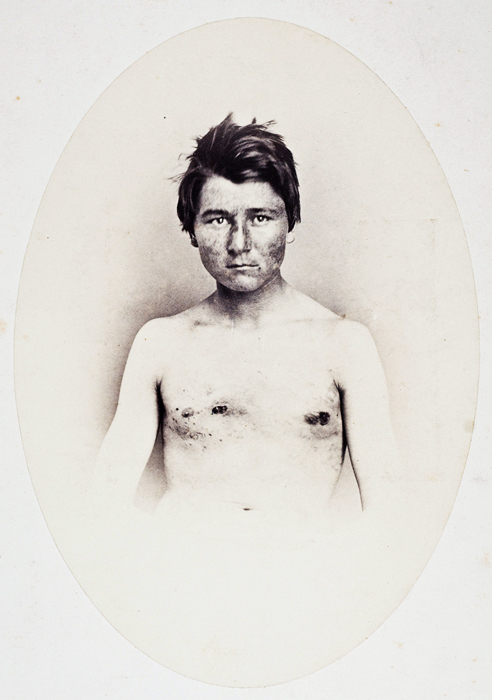
Private Frederick Gross, Company F, 5th Wisconsin Volunteer Infantry.
We compared images and realized he obviously was washed up and hair combed, indicating that it may have been taken a day or two later. As we curbed our excitement from the finding, we remarked how we wished we had of taken down her information so that we could let her know about the recent discovery.
A few moments later, her vehicle pulled back into the parking lot, and she came back in to clarify something on her map. I rushed out and asked if I could have just a minute longer with her. We then showed her the high-resolution image and asked her if she had seen it before. As she said no, all emotional inhibitions were thrown out the window and she grabbed my arm and burst into tears. We stood there together for a few moments, and I walked her through just how unusually rare this image was. She was so appreciative for our efforts and for the imperative work we were doing as historians and battlefield park rangers for the public. She never completely regained her composure. I turned to Zachary and said, “This is why we do what we do.”
Zachary replied, “The sense of amazement and sorrow at the lives those people lived, the sense of pride at the perseverance of their people in a horrid situation of robbed humanity, bring about those same feelings that what we do as historians truly matters.”
Due to the nature of the historical research conducted to this point, we rarely see direct descendants of the enslaved people from our particular historic locations, but often descendants from the local community and area will visit. These interactions and connections happen frequently enough for us to not only record them, but also write about them. We hope to learn more and share their stories more when we can.
The love of working at a battlefield park
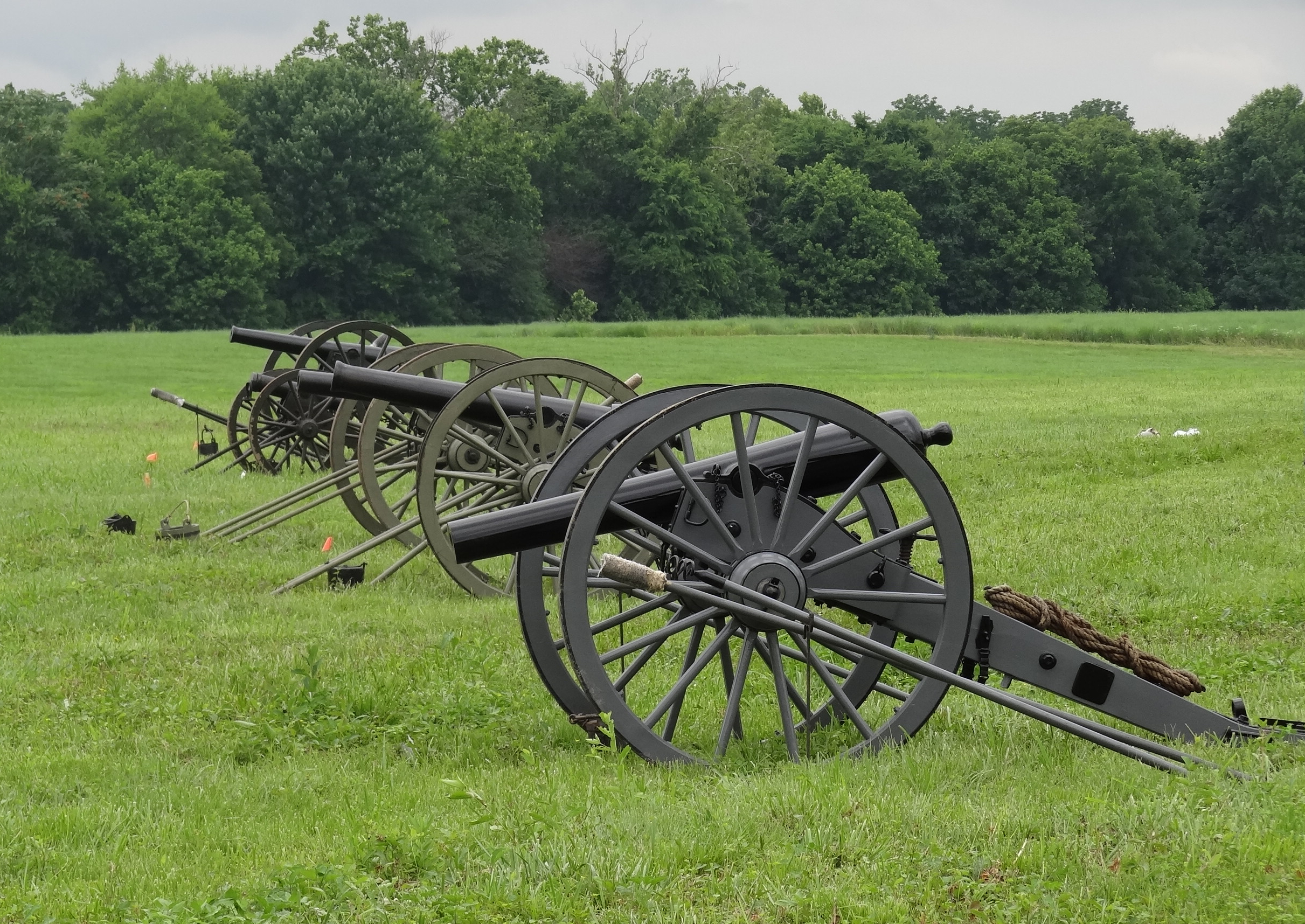
Cannons on the battlefield at Staunton River
Though working at a battlefield park requires a different kind of park ranger, we share with our sister parks our common focus on the visitor and their overall experiences. Here at Sailor’s Creek and Staunton River Battlefield, we pride ourselves in not only the quality of information we offer our guests, but also the level of tact and general professionalism with which we present it. Visitors come and go daily, some more impacted by the ground made hallowed by the sacrifices of long ago than others.
One thing is for certain, I’ve been just as moved by our visitors that have left with an almost spiritual connection to the sites and stories here. I am honored to be able to tell these stories - I am humbled by helping to interpret these distant memories. I am enthusiastic about the opportunity to give this often-overlooked history a heartbeat again.
Visit Sailor’s Creek Battlefield and Staunton River Battlefield State Park to look into history yourself. Check our webpages for more information about the parks and upcoming programs.
If you have read the article and have a question, please email nancy.heltman@dcr.virginia.gov.
Search for blogs
By Park
Categories
Cabins
Camping
Fishing
History and Culture
Other
Programs and Events
Trails
Volunteers
Water Fun
Archive
2024
2023
2022
2021
2020
2019
2018
2017
2016
2015
2014
2012














